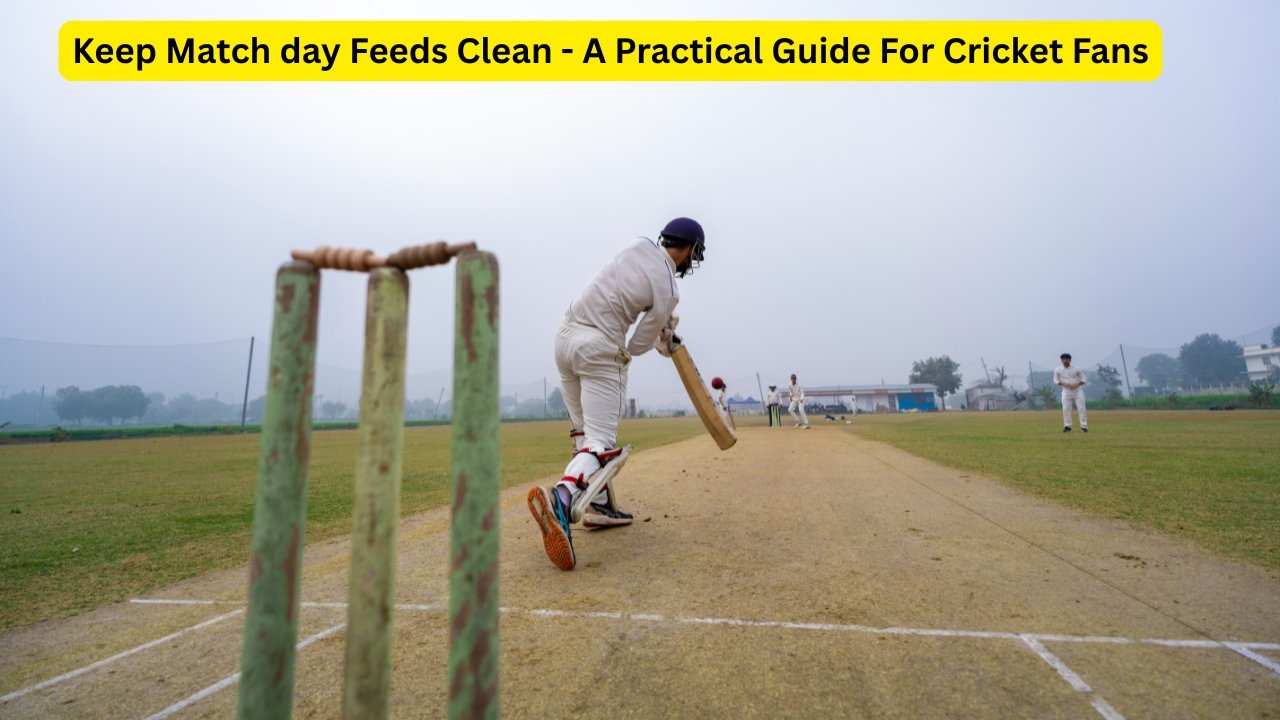Big fixtures deserve full attention, yet the feed keeps trying to steal it. A reel shouts for one tap, a banner flashes a timer, a friend drops a “must-see” link, and the over that matters turns foggy. The way out is simple and calm – a light plan that matches real living rooms and busy phones. Give each device a job, set a clear rule for links, and keep posts short enough to publish between balls. Nothing here asks for iron will. It asks for order. With a few steady habits, the stream stays steady, captions land on time, and the last over is remembered for skill, not for a pop-up that nudged the room off the crease.
Why Attention Slips During Live Cricket
Promos and side links time their push to cricket’s pulse. They bloom during anthems, between overs, and right before death overs when nerves run high. The brain loves short paths, so a bright line tied to a quick verb feels like relief. It isn’t. It is a detour. Start by naming it out loud: “That’s a timer trick – eyes back to the bowler.” Groups that share one phrase cut stray taps fast. Place the main screen where signal holds, set quality once, and mute non-match alerts for the slot you’ll watch. Keep the score app open on a second device, not the one that streams. Simple placement cuts half the friction before a single ball is bowled.
Promos working the break often lean on slot-like cues – rising graphs, warm colors, and soft claims of control. Treat them as reading practice, not action prompts. When a page explains how slots are grouped and labeled, scan it like a rule sheet and learn where terms live: payout ranges, caps, and house notes. If a sample helps you see layout patterns clearly, read more and notice how headings, short blurbs, and limits sit on one screen. Then park the link. This is media literacy for fans – built to keep focus during play and give safe language for younger people in the room who ask quick questions at the worst moment.
Set Calm Roles For Every Screen Before The Toss
Rooms run better when devices have jobs. Pick one main screen for the match and place it where heat can escape and the 5 GHz band reaches well. Give one phone the camera role for short clips; give another the family-chat role so replies don’t drown the group. Mute every other alert until stumps. Keep a tiny note with three ready captions – lift, hold, release – so posting never steals an over. Lock the network on the watch device so it doesn’t jump mid-spell. Say one house rule once: “We read links for awareness, we act later.” It sounds small, yet it sets tone, cools debates, and keeps young fans safe without turning the room stiff.
Read Banners Without Losing Overs
Most banners use three levers – a clock, a claim of control, and a graph that climbs before a hard reset. Push back with three questions in this order: What happens after the clock ends. What must happen before any exit works. Where are the rules in plain text on one screen. If answers hide behind tiny footers, park the card. If answers sit in clear type and the exit path is clean, save the link to a “Read After Stumps” note. That single habit stops the loop where a tap becomes five, and five becomes a missed wicket. It also teaches careful reading that helps outside sports – news, shopping, and every place where timers try to rush calm minds.
Share Highlights Without Spoilers Or Drift
Sharing is part of match culture; the trick is timing. Film during natural pauses – after a replay, between overs, or while fielders move. Keep captions concrete and short: two clean lines, one image, one verb that moves. Place an emoji, if any, at the end of the second line so the shape reads well on phones. If friends watch across homes, agree on one “poster” per group so ten clips don’t flood the chat while the bowler turns. Mute score alerts on side phones so they don’t shout a wicket before the video shows it. When someone drops a heated side link in the 19th, say, “Parking that till stumps.” One sentence, no fight, focus saved.
A Two-Minute Reset That Trains Focus For Next Time
After stumps, clear near-duplicate clips, keep one favorite, and pin the caption that felt right tonight. Note two things – where the stream held best and what pulled eyes off the ball. Move the router a little higher if signal dipped; set a cooler shelf for the box if heat rose late. Add one line to your “Read After Stumps” note about any tricky page you saved – why it pushed, where the rules hid, what words tried to hurry you. This tiny log turns into a quiet edge in two weeks. The plan becomes habit, the feed loses sway, and match nights feel clean. The game gets the space it earns, friends leave with the same story, and your head hits the pillow thinking about yorkers – not about a banner with a clock.


